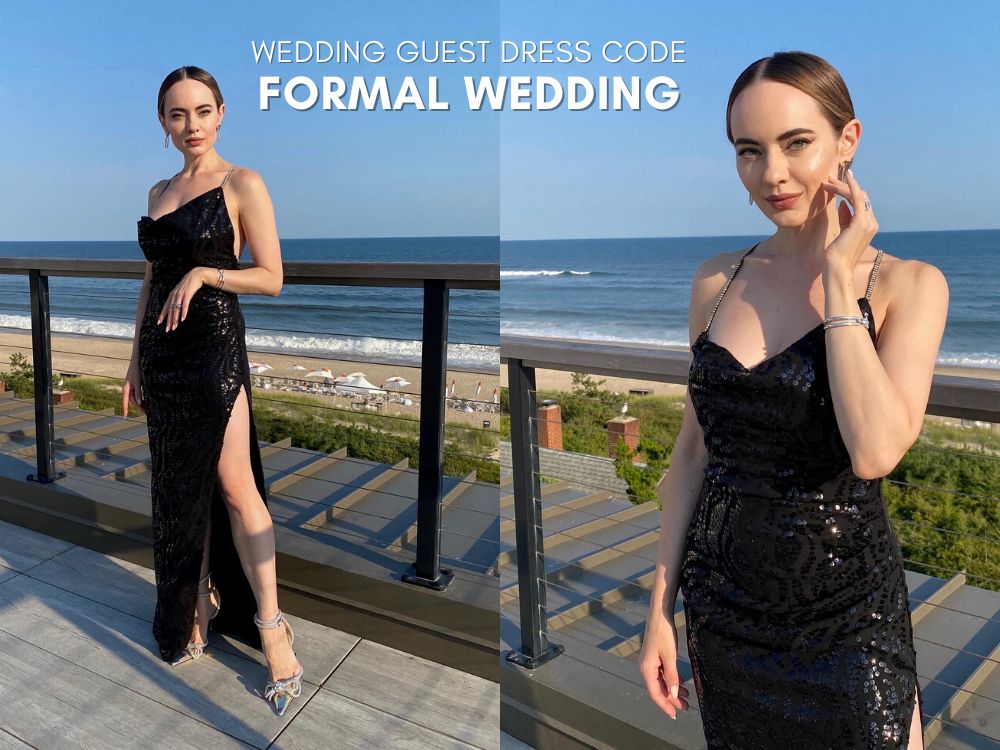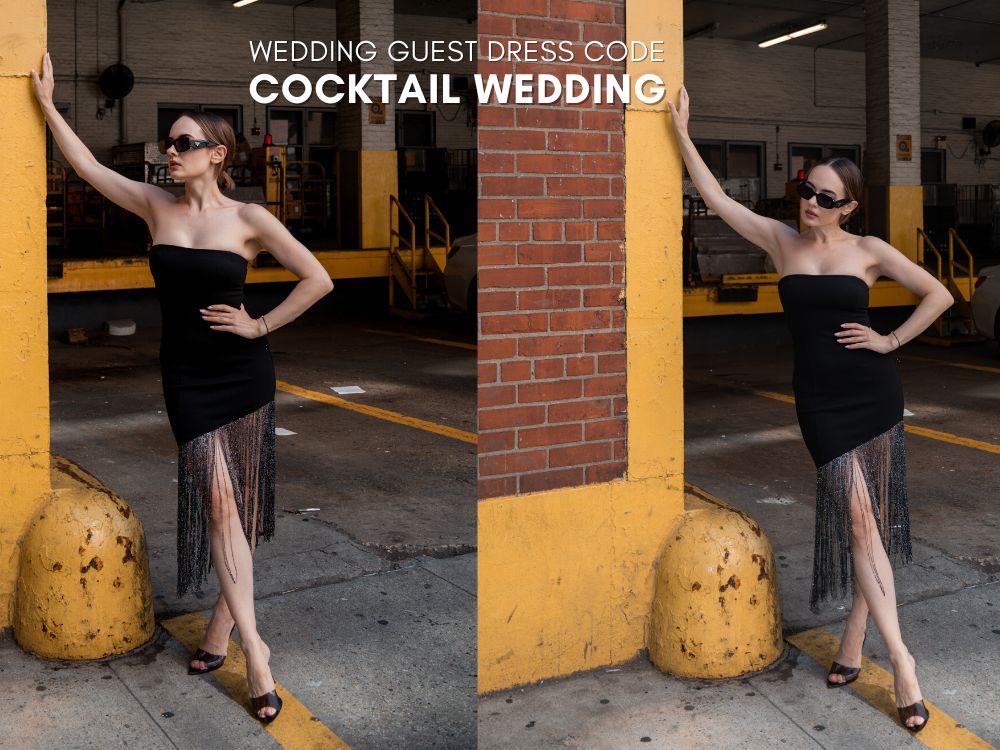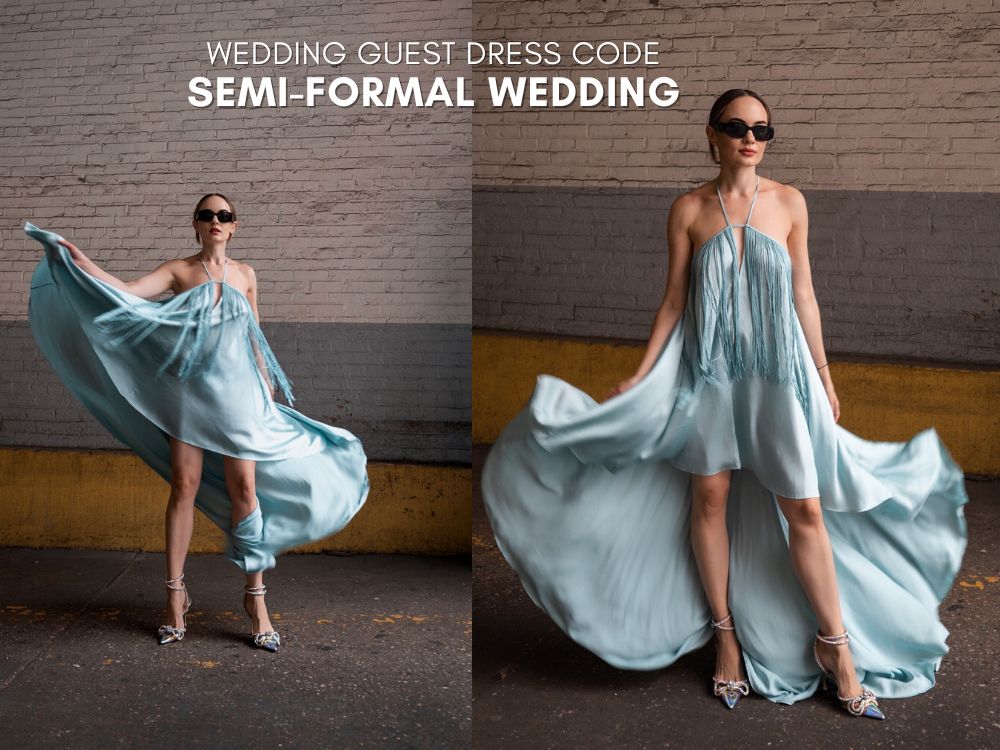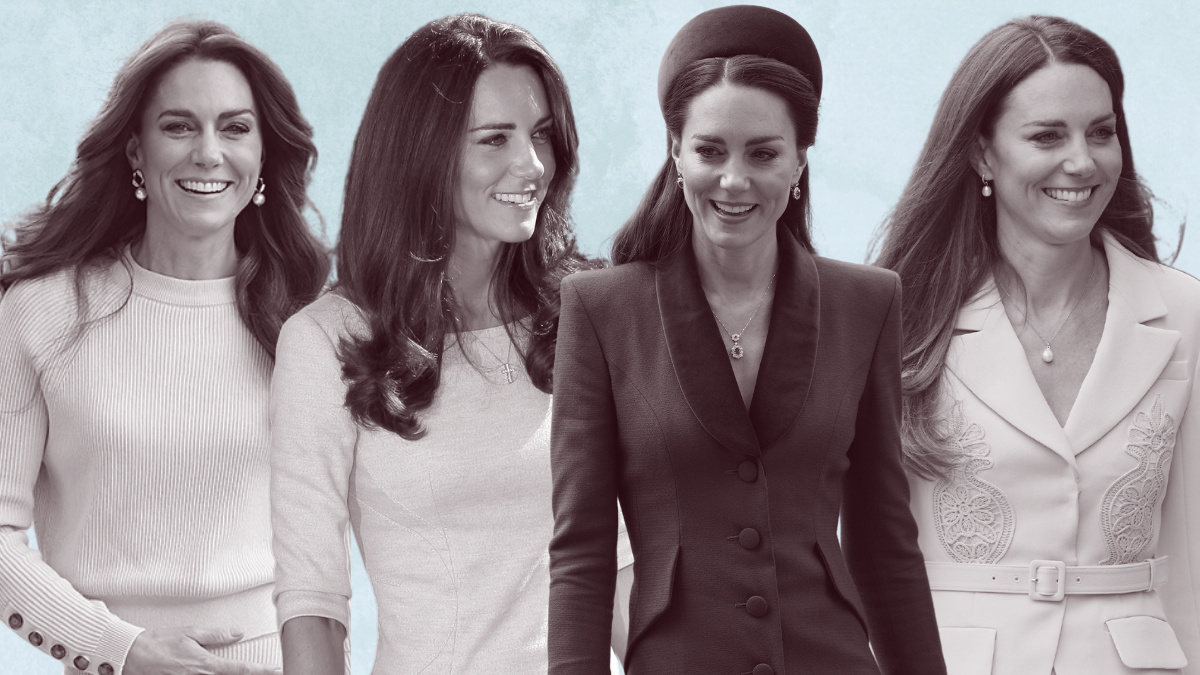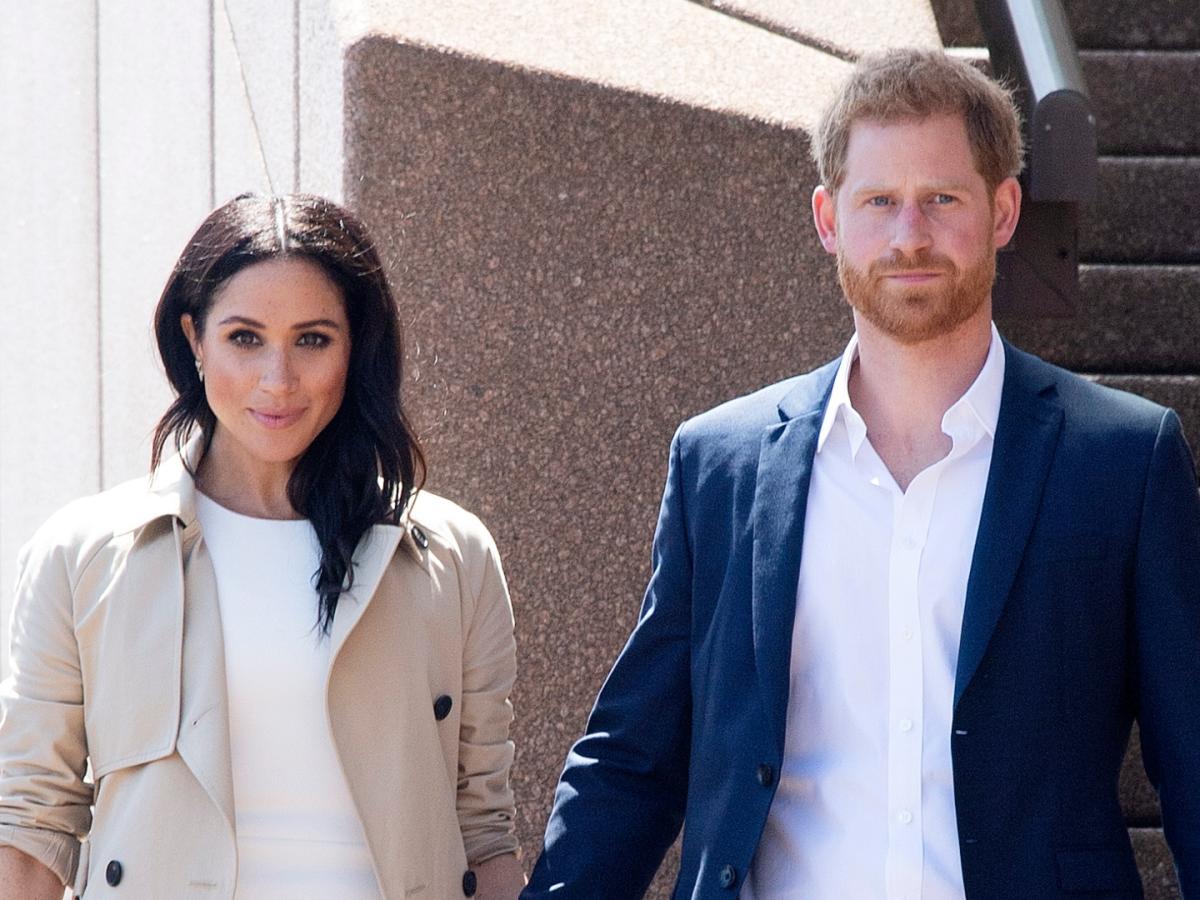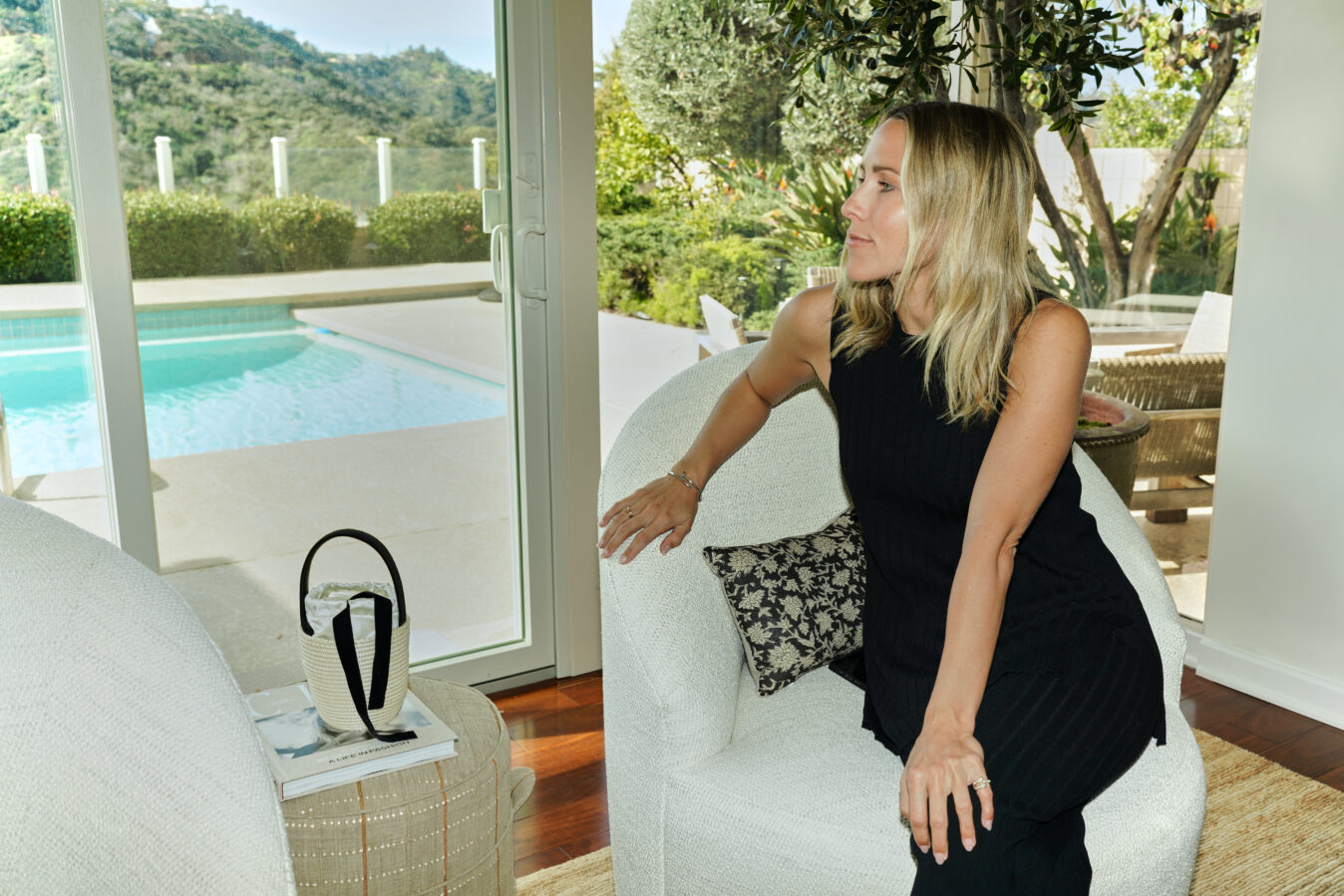Table of Contents
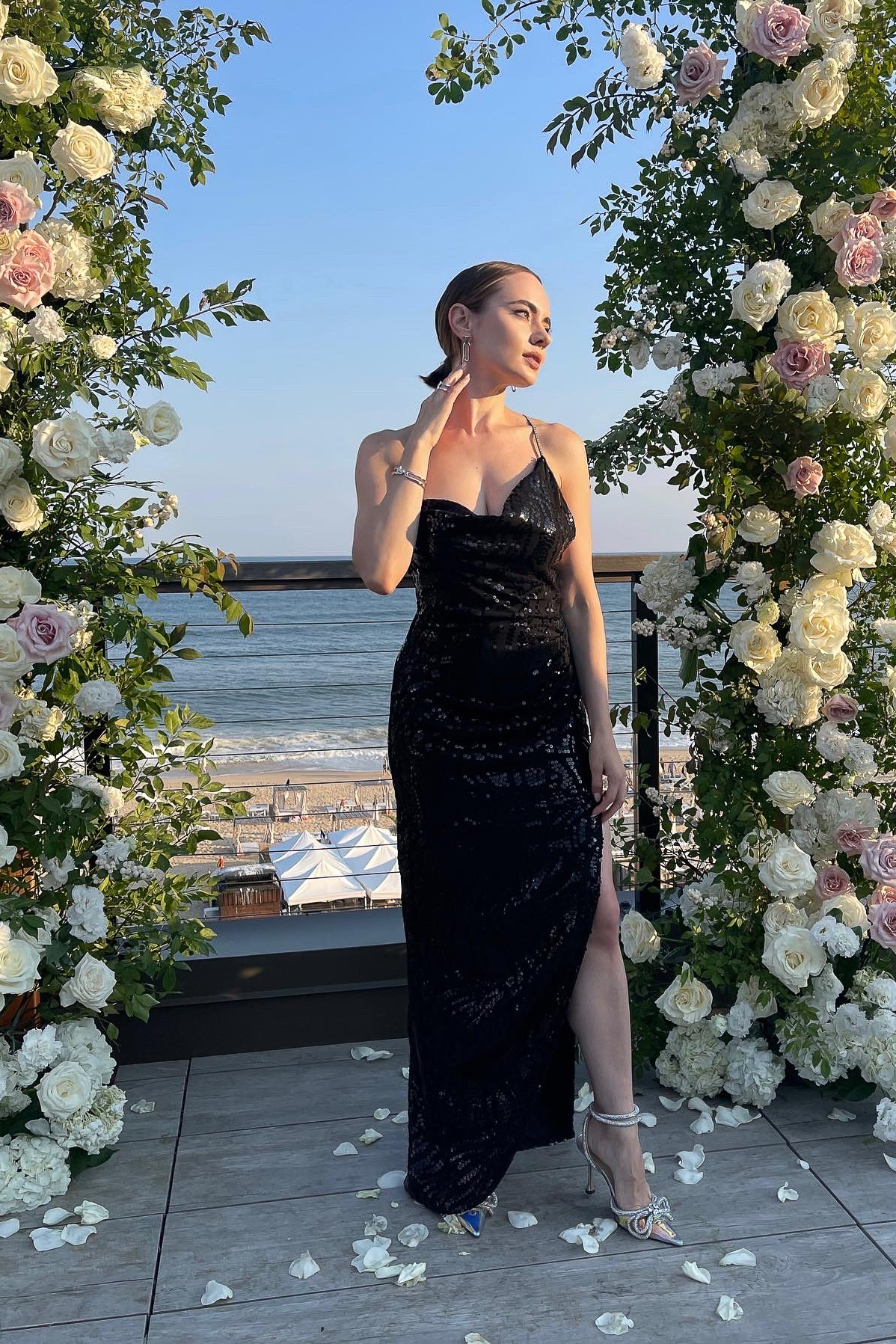
Decoding a wedding guest dress code could be challenging. Between “black tie” and “semi-formal” language, plus weather and location specifics, it’s hard to decide which wedding guest dress to pick. In this post, I collaborated with Revolve to share tips and tricks on which dress to choose for every type of wedding.
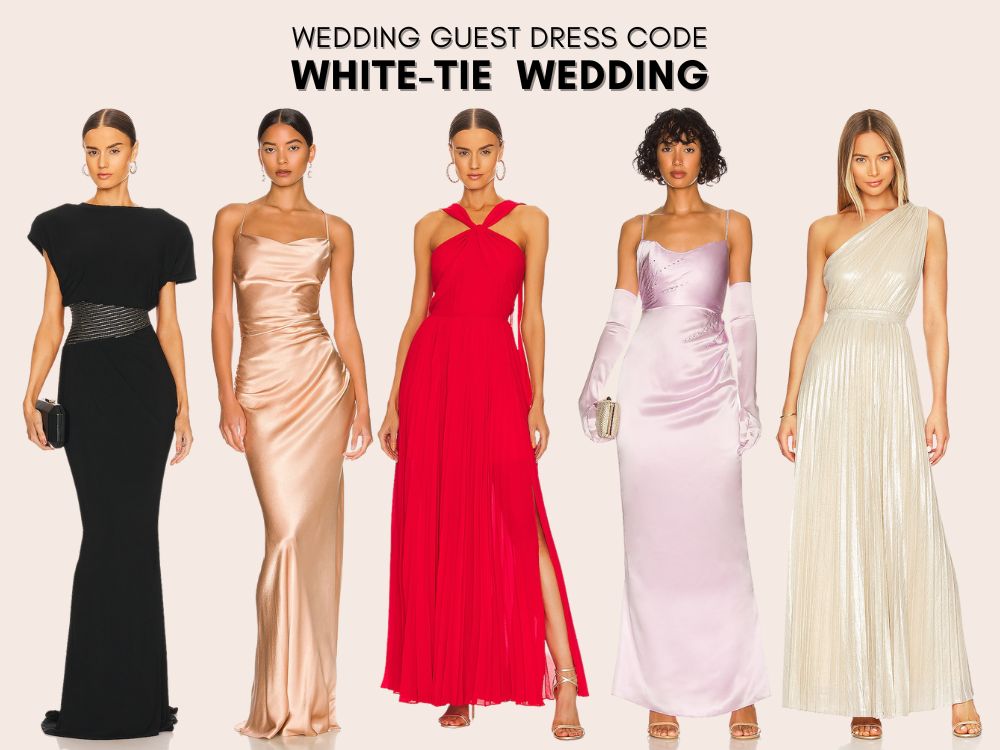
black | blush | red | lilac | ivory
White-Tie Wedding Dress Code
This one is the most formal of all dress code options for a wedding. Think White House Dinners or charitable galas. The dress for women is to wear long gowns paired with heels — no exceptions. Forget fun, asymmetrical silhouettes and neon colors: only subtle, solid colors (preferably black or dark green, dark burgundy, brown, or other deep, elegant hues). A white-tie wedding is your opportunity to wear opera gloves and jewelry paired with sleek up-do hairstyles and neutral nails.
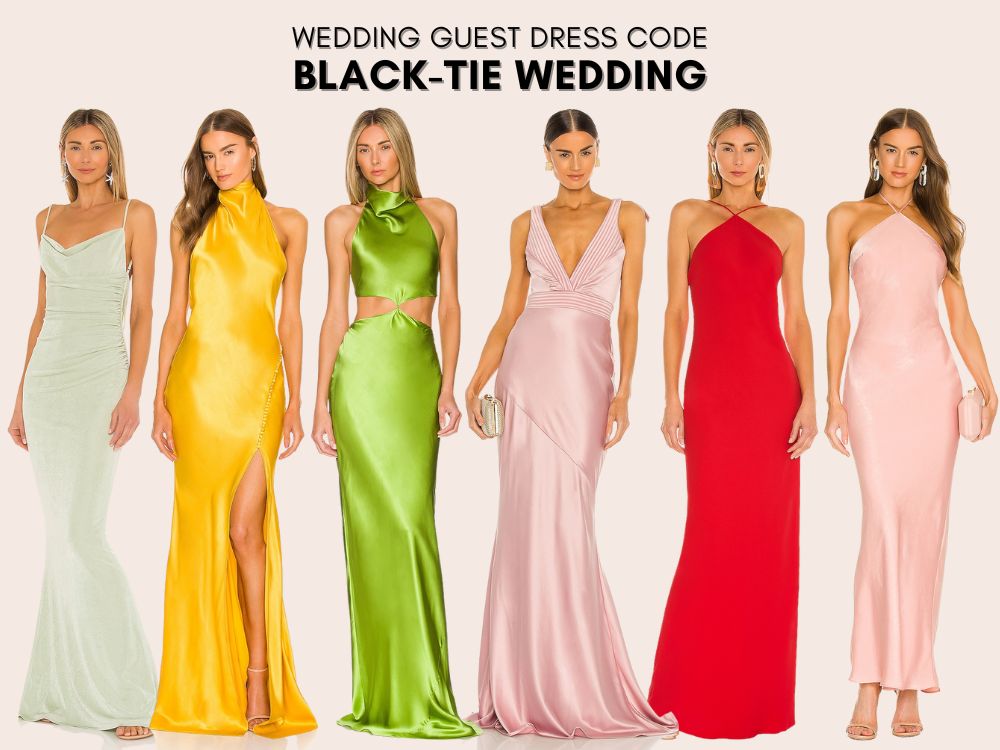
tea green | yellow | green | pink | red | pink
Black-Tie Wedding Dress Code
A little less formal than white-tie, the black-tie wedding dress code entails floor-long gowns, a more decorated traditional maxi dress, or a dressy jumpsuit. The idea here is that the outfit should hit the ankles and doesn’t look too summery or bright-colored.
Ideally, a black-tie wedding guest dress is a black gown with a fun little twist like a sequin or embroidered detail. Princess-style skirts are also allowed for the black-tie dress code, but these are out fashioned and should be avoided as tulle dresses remind too much of a wedding gown.
Formal Wedding Dress Code
This type of wedding dress code is almost identical to the black-tie one, with the only difference to the length of the gown. While in black-tie and white-tie dress codes, the length is strictly below the ankle, with a formal dress code, you could go up to a shorter dress option. Make sure a gown’s overall look is still evening-like and not too flashy.
Cocktail Wedding Dress Code
Cocktail attire is one of the most popular wedding dress code options. It allows guests to choose a wide range of gown styles, from floor-length ones to tea-length (land below the knee but above the ankle), knee-length, or midi dress options. With a cocktail wedding dress code, you could go with a bit more fun but still a sophisticated dress. Remember to never go too heavy on dress embellishments and prints, so your dress doesn’t overshine the bride’s dress.
Semi-Formal Wedding Dress Code
Also known as a dressy casual, this type of wedding dress code doesn’t restrict the guests to wear only gowns and allows two-piece outfit options. Consider an elegant midi or maxi skirt paired with a luxurious silk blouse or a dressy top. That dress code is typically requested for a daytime wedding, so a gown or a formal dress would be inappropriate for that occasion.
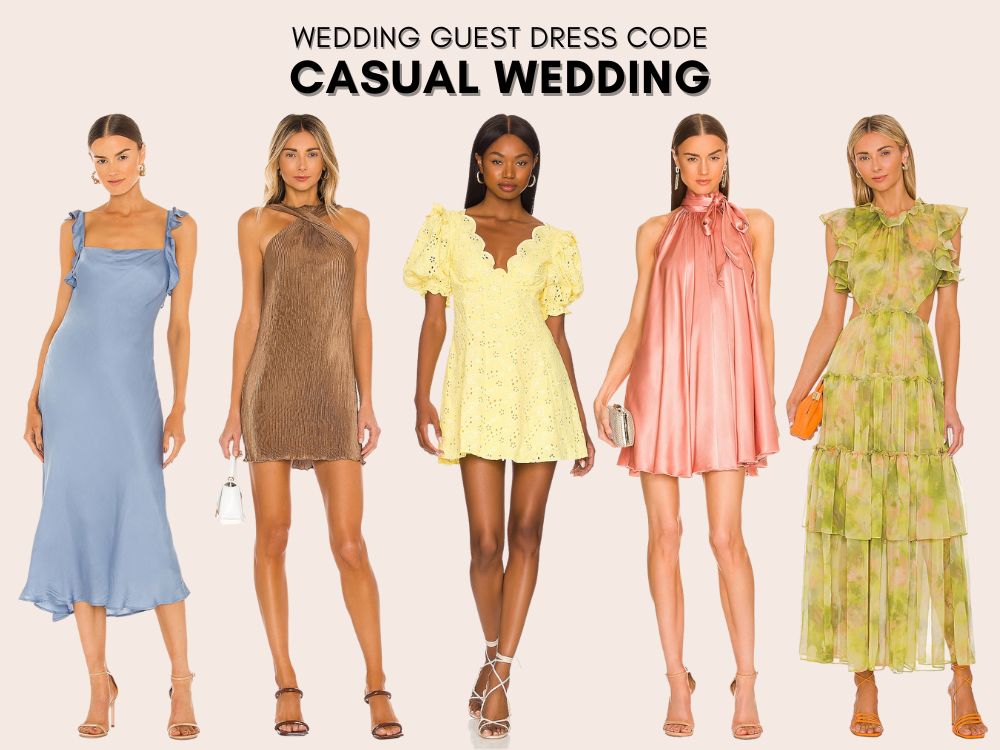 blue | brown | yellow | pink | floral
blue | brown | yellow | pink | floral
Casual Wedding Dress Code
Typically, that type of wedding dress code is reserved for daytime weddings held outdoors or on a beach. While there is a word “casual” in this dress code description, it doesn’t mean that guests could wear shorts, tanks, and flip-flops! Instead, think of non-revealing summer dresses with a sleek silhouette or a two-piece linen set that looks sophisticated but daytime-appropriate.
When it comes to dressing for a destination wedding — especially if it takes place on a tropical resort — picking a not-too-hot outfit is a way to go. Silk, cotton, or linen dresses will look elegant and won’t make you sweat throughout the ceremony. When it comes to a destination wedding, the shoe dress code is also less formal, so that you could go for sandals, ballerina flats, or wedges.
Themed Wedding Dress Code
There is also a themed wedding option, when the couple picks either a color theme (for instance, everyone wears white but newlyweds wear pink) or an era of fashion (for example, 1920s-inspired outfits). With that type of wedding, it’s hard to give any recommendations as it all depends on what kind of vision the couple has in mind. For a themed wedding dress code, sending potential wedding guest dress options to a bride or groom is easier to ensure you follow their vision.
Tips for Picking a Wedding Guest Dress
In addition to the dress code indicated on your wedding invitation, it’s essential to consider weather conditions and how wedding traditions differ worldwide.
- Google the location to get a vibe of where the wedding will take place. It will help you not only with the color scheme of your look (which is essential if you want to take awesome wedding pics) but also plan your shoe options. For instance, if the wedding will take place outdoors on grass, it would be more convenient to wear wedges, flats, or block-heel shoes.
- Ask about the color theme of the wedding. That information will allow you to avoid looking like a bridesmaid when you are not actually at a bridal squad. For instance, if the colors of a wedding are white and pink, it’s most likely that the bridesmaids will be wearing pink dresses — so you should pick something else.
- Never wear white at a wedding. It might be an obvious thing to state, but I’ve seen many people making this mistake and feeling terrible about it. The same goes for ivory dresses that look almost white or printed with a white background — all these options are inappropriate for a wedding guest outfit.
- Think about layers. Typically, a wedding runs till late at night, so that you might get chilly. To avoid that situation, invest in a cute feather bolero that will match any formal dress in your collection. That outwear looks sophisticated and will keep you warm throughout the wedding day.
- Start shopping for a wedding dress ahead of time. Picking a gown is much easier than settling on a wedding dress, but even a wedding guest gown might need tailoring. Depending on how much you want to change in your dress, it might take a few days to a few weeks to perfectly fit your gown. Avoid unnecessary stress by picking your wedding guest dress ahead of time and tailoring it at a slow pace.

